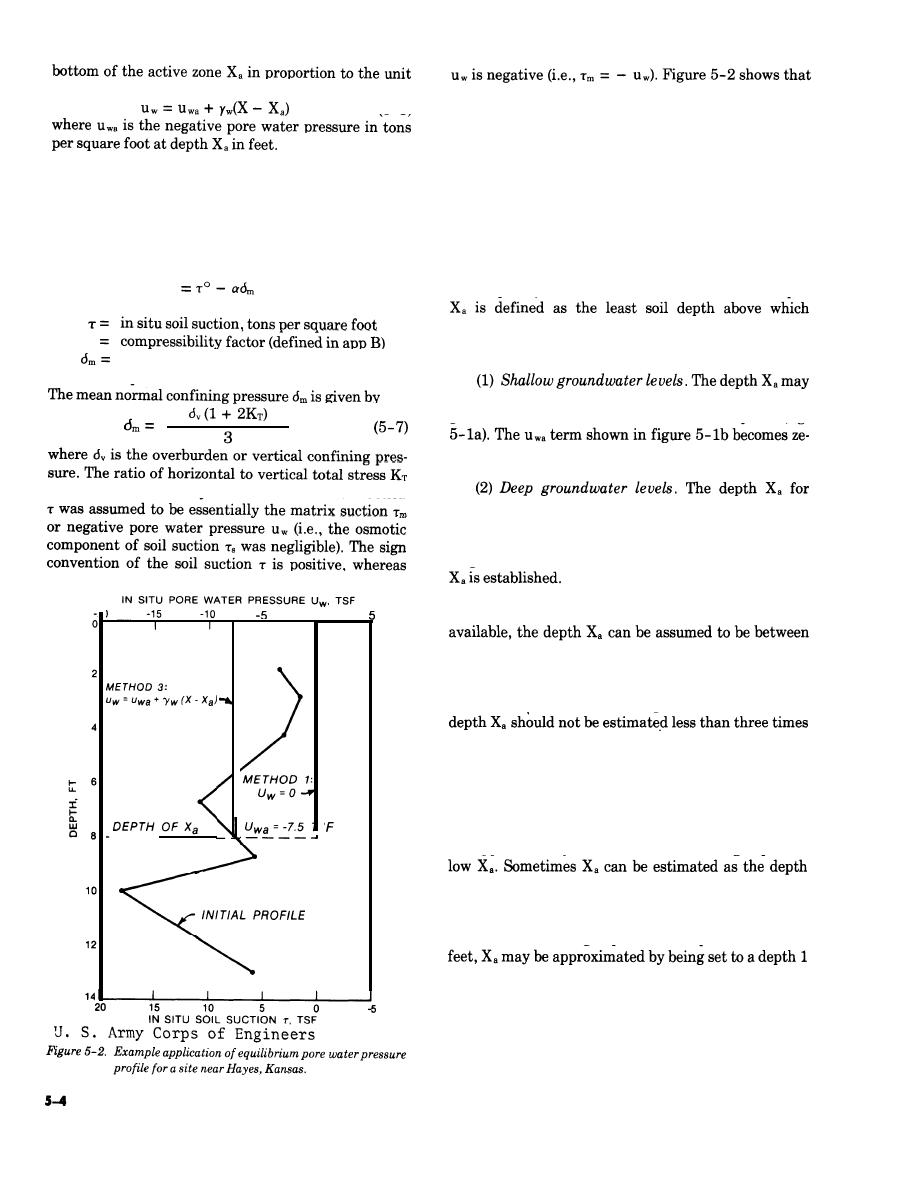
TM 5-818-7
weight of water
the hydrostatic equilibrium profile is nearly vertical
(5-5)
with respect to the large magnitude of soil suction ob-
served at this site. Heave will be predicted if the satur-
ated profile occurs (Method 1 as in fig. 5-1), while
(d) Example application. Figure 5-2 illustrates
shrinkage will likely be predicted if the hydrostatic II
how the saturated (Method 1) and hydrostatic II
(Method 3) profile occurs. The availability of water to
(Method 3) profiles appear for a suction profile with-
the foundation soil is noted to have an enormous im-
out a shallow water table at a sampling site near
pact on the volume change behavior of the soils. There-
Hayes, Kansas. The initial in situ soil suction or nega-
fore, the methods of chapter 7 should be used as much
tive pore water pressure was calculated from the given
as practical to promote and maintain a constant mois-
natural soil suction without confining pressure To by
ture environment in the soil.
c. Depth of the active zone. The active zone depth
(5-6)
T
where
changes in water content and heave occur because of
climate and environmental changes after construction
mean normal confining pressure, tons per
of the foundation.
square foot
be assumed equal to the depth of the water table for
groundwater levels less than 20 feet in clay soil (fig.
ro for the hydrostatic I equilibrium profile in the pres-
ence of such a shallow water table.
was assumed to be unity. The initial in situ soil suction
deep groundwater levels may often be determined by
evaluating the initial pore water pressure or suction
with depth profile as described in appendix B, The
magnitude of u., is then determined after the depth
that of the corresponding negative pore water pressure
(a) If depths to groundwater exceed 20 feet be-
neath the foundation and if no other information is
10 feet (for moist profiles or soil suctions less than 4
tons per square foot) and 20 feet (for dry profiles or
soil suctions greater than 4 tons per square foot) below
the base of, the foundation (fig. 5-lb). However, the
the base diameter of a shaft foundation. Sources of
moisture that can cause this active zone include the
seepage of surface water down the soil-foundation in-
terface, leaking underground water lines, and seepage
from nearby new construction.
(b) The pore water pressure or soil suction is of-
ten approximately constant with increasing depth be-
below which the water content/plastic limit ratio or
soil suction is constant.
(c) If the soil suction is not approximately con-
stant with increasing depth below depths of 10 to 20
to 2 feet below the first major change in the magni-
tude of the soil suction, as shown in figure 5-2.
d. Edge effects. Predictions of seasonal variations in
vertical heave from changes in moisture between ex-
treme wet and dry moisture conditions (fig. 5-1) are
for perimeter regions of shallow foundations. These



 Previous Page
Previous Page
